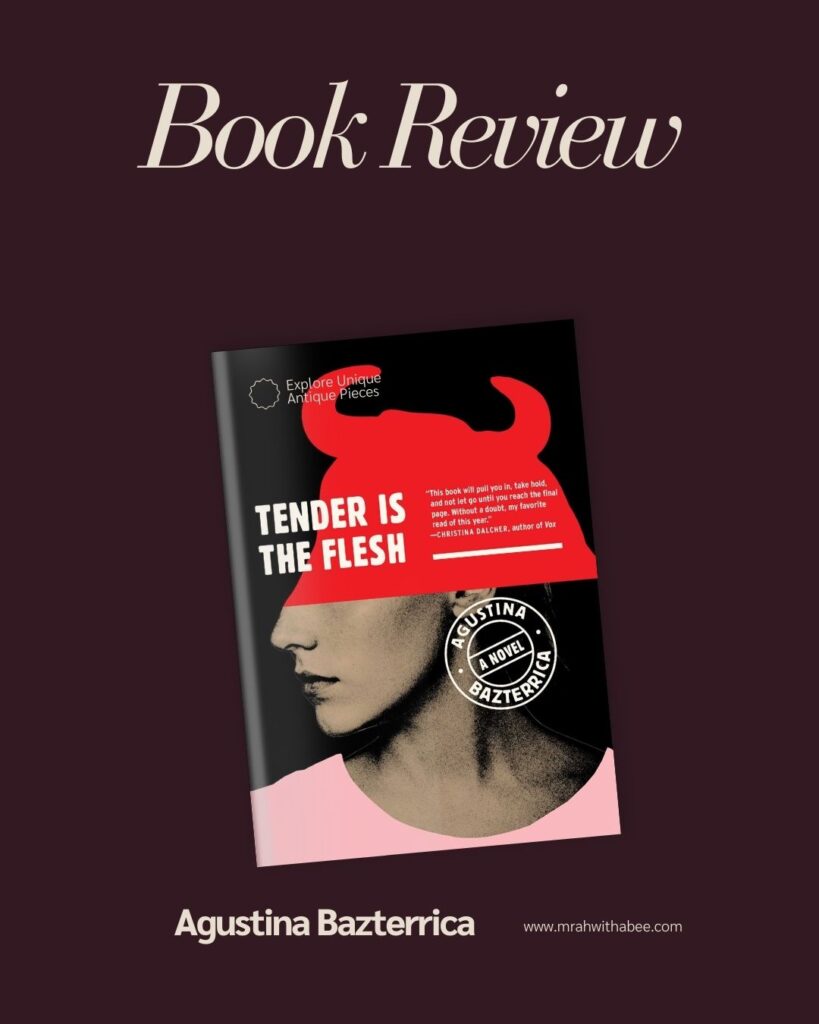Tender is a Flesh is a dystopian novel by Agustina Bazterrica that portrays a horrifying reality in which people are farmed, processed, and consumed as meat. The book was originally published in Spanish under the title “Cadáver Exquisite”. It has garnered widespread praise for its unsettling premise, thought-provoking insights, and grotesque portrayals of a world where cannibalism is normalized.
In this post, we will explore the themes and structure of Tender is the Flesh, answering key questions about the storyline, narrative style, and why it has become a pivotal work in horror literature.
1. What Is Tender is the Flesh About?
Tender is the Flesh is a dark critique in a dystopia where humans are farmed due to a virus affecting animals. To fill this gap, governments around the globe sanctioned the farming of humans, referred to as “heads”. These individuals are bred for slaughter and treated like livestock in a disturbingly normalized system.
The story examines how this reality alters human relationships, ethical boundaries, and the essence of humanity. The novel prompts readers to reflect on themes of dehumanization, complicity, and the consequences of viewing others merely as commodities. Tender is the Flesh, through its unsettling premise, challenges us to confront our own views of value and humanity in the world.
The protagonist of the novel is Marcos Tejo, an employee at a meat processing plant. He lives with grief and sorrow as he mourns his recently deceased son and resides apart from his wife. Throughout the novel, Marcos grapples with his role in the system and the dehumanization of himself and the “heads”. His struggles deepen when he receives a “female” (a human bred for consumption), forcing him to confront ethical dilemmas.
Tender is the Flesh doesn’t only portray a society gone wrong but also challenges the reader to reflect on the value of life, the morality of consumption, and the chilling consequences of normalizing brutality. It is a sharp critique of industrial farming, capitalist exploitation, and humanity’s capacity to disconnect from suffering when it’s convenient.
2. How Many Chapters Are in Tender is the Flesh?
Tender is the Flesh consists of two parts with about 23 chapters, though the breakdown may vary by edition. Furthermore, the narrative unfolds seamlessly, with the first part establishing the dystopian world and Marcos’s life. Lastly, the second part delves deeper into his internal conflicts and darker, personal aspects of the story.
Each chapter adds to a growing layer of tension and discomfort, as the novel progressively builds towards its shocking conclusion. As the story unfolds, the moral ambiguity of Marcos’s choices leads to a gripping climax and ethical dilemma.
3. What themes and ideas does “Tender is the Flesh” explore?
“The human being is the cause of all evil in this world. We are our own virus.”
Dehumanization and Morality: One of the novel’s central themes is how society easily dehumanizes certain groups for the sake of convenience. The characters in this world justify cannibalism without guilt by renaming humans as “heads” and treating them like livestock. This reflects how industrial farming often objectifies animals today, making it easier to overlook their suffering. Marcos’ internal struggle embodies the moral dissonance between acknowledging the humanity of the “head” and participating in their consumption.
Alienation and Grief: The protagonist endures profound isolation, highlighting the emotional and psychological impacts of existing in a dehumanizing society. Marcos’s emotional isolation reflects societal breakdown, with his child’s loss and marriage collapse as key metaphors. The ethical void of his job compounds his grief, creating a pervasive sense of alienation. However, despite this emotional detachment in both his personal and professional life, it critiques a society that has lost its moral compass.
Critique of Consumerism and Exploitation: The novel provides a sharp critique of consumerism and exploitation. The commodification of human life in Tender is the Flesh parallels modern capitalism, prioritizing profit over ethics. Society treats the “heads” as commodities to be sold, consumed, and discarded, reflecting real-world issues like labor exploitation and the objectification of workers in a profit-driven system.
Horror and Shock Value: Bazterrica uses horror to confront unsettling truths about human nature, ethical consumption, and societal decay. The grotesque portrayals of the slaughter process, the normalization of cannibalism, and the cold detachment of the characters contribute to the novel’s disturbing atmosphere.
Why Tender is the Flesh Is a Pivotal Work in Horror Literature
Tender is the Flesh gains attention for its intense exploration of a world where the lines between human and animal, consumer and consumed, are blurred. Critics praise the novel for its originality and thought-provoking nature, challenging ideas on morality and empathy.
While shocking, many note Bazterrica’s restrained style makes the horror feel even more visceral. The clinical descriptions of meat processing, indifferent workers, and normalized cannibalism create a deeply unsettling experience.
Reception: On platforms like Reddit, Tender is the Flesh frequently emerges as one of the most disturbing books in the horror genre. Readers find the thought-provoking themes captivating and appreciate its commentary on humanity without conventional horror tropes. Meanwhile, according to Wikipedia, the novel has received mostly positive reviews, with readers praising its ability to raise significant questions about society, ethics, and the future.
Final Thoughts
Tender is the Flesh compels readers to question the value of human life, ethics of consumption, and suffering. Moreover, through the lens of dystopian horror, Bazterrica crafts a world that is both terrifying and chillingly plausible. This novel is essential reading for fans of speculative fiction and philosophical horror.
Thank you for reading, for more interesting articles visit our homepage



